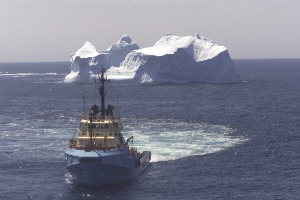News

Scientific Consultation Workshop: Earth Observation for Cryosphere Science
11 May 2009
ANOUNCEMENT
ESA in collaboration with CLIC International Project Office organise the Scientific Consultation Workshop: Scientific requirements for an ESA-CliC joint action. The Workshop will take place at the ICT Technologiepark, Innsbruck, Austria, 17th June 2009.
For more detailed information on the workshop organisation and venue please see: ESA_CLIC_Scientific Consultation.pdf.
Background:
The CliC Project was established in March 2000 by the World Climate Research Programme (WCRP) to stimulate, support, and coordinate research into the processes by which the cryosphere interacts with the rest of the Earth system. The CliC project's principal goal is to assess and quantify the impacts that climate variability and change have on components of the cryosphere and its overall stability, and the consequences of these impacts for the Earth system. To attain its goal, CliC develops and coordinates national and international activities related to cryosphere science.
Since its early stages, Earth Observation (EO) technology has revealed as a unique tool to observe, measure and monitor the cryosphere and its dynamics on a regular basis and at scales ranging from global to local. Monitoring ice thickness and sea ice extend, improving our estimates of ice sheets mass balance and velocity structure, enhancing our knowledge of the sea-level contributions of Antarctic and Greenland ice sheets, improving our capacity to understand and quantify sub-glacial drainage processes or monitoring glaciers, icebergs and ice shelf dynamics, are only some of the areas where recent scientific results have demonstrated the unique value of this technology.
In the coming years an increasing number of EO missions will provide an unprecedented capacity for cryosphere science. The recent availability of missions such as ALOS, Radarsat-2, Terrasar-X and Cosmo-Skymed has already opened the door to new exciting scientific results, enhanced observations and novel applications. In the near future, the advent of the ESA’s Cryosat-2 and the Sentinel series will further enhance this global observation capability. The full exploitation of this multi-mission capability by the scientific community and operational users will require coordinated research and development efforts to develop and validate novel products and applications.
In this context and in order to support existing scientific efforts carried out by CliC, the European Space Agency (ESA) and the CliC Project Office plans to launch of a dedicated joint activity addressing some of the key scientific priorities in Cryosphere science where EO technology and ESA missions may contribute. In particular the planned activity aims at:
1) Advancing towards the development and validation of novel advanced EO-based multi-mission based products, improved data sets and enhanced applications that may respond directly to the specific scientific requirements of the CliC and cryosphere scientific community;
2) Exploit novel EO approaches to improve the observation, understanding and prediction of cryosphere processes with special attention to CliC priorities. In particular, two major areas of interest have been identified:
• Reducing uncertainties in estimations of the mass balance of the Antarctic and Greenland ice sheets and their contribution to sea-level change;
• Lake and river ice dynamics contribution to the northern hydrology system.
3) Develop a Scientific Roadmap as a basis for further ESA scientific support activities dedicated to the CliC community.
The project will be funded by the new ESA’s Support to Science Element (STSE) and awarded to a consortium of research institutions, technical centres and value adding companies following an open competitive tender. The corresponding invitation to tender is planned for the 3rd quarter of 2009.
In order to better define the scientific requirements, priorities and scope for the project, CliC and ESA have organised a Scientific Consultation Workshop the 17th June 2009. The objectives of the workshop are:
1) Consolidate the Scientific Requirements of the CliC community in the areas of ice sheet mass balance and river/lake hydrology in northern latitudes;
2) Reviewing the status of current EO-based observations and methods relevant for the above two priority areas;
3) Identifying the main research needs towards the development of novel EO based multi-mission approaches, products, and data sets to serve the needs of the CliC community on the two specific thematic areas of interest;
4) Identifying the main geographical areas of interest and existing data sets that may contribute to the project.
The workshop is an important step in the project preparation. It will be organised around a number of invited keynotes speakers, who will give overviews of the aforementioned topics and related state-of-the-art research and operational developments. Successively, plenty of time will be reserved for open discussions.
The ultimate target of the workshop is to consolidate a Scientific Requirement Documents that will be the basis for building the planned ESA-CLIC STSE activity.
The workshop will be limited to 30 participants.
If you plan to attend the workshop, please register no later than Monday 5th June 2009 by sending an email (subject “ESA-CLIC workshop registrationâ€) to Doris Reinprecht at ESA (Doris.Reinprecht@esa.int).
For information on the workshop accommodations please see: Hotel list and logistics.
Final Programme
Venue: ICT Technologiepark, Technikerstrasse 21a, 6020 Innsbruck, Austria
Room: Floor E00, Seminarraum 1
Time: 09:00
Â
Â



